
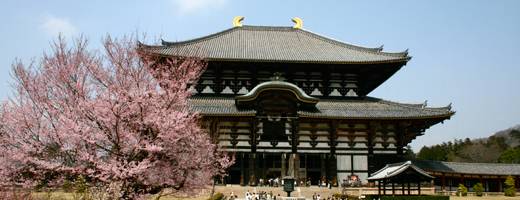




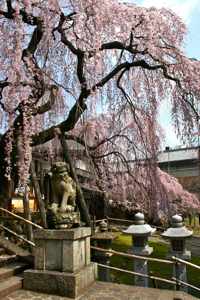 Nara is an old town, founded in 710, and Japan's first capital for 74 years. Many of the old wooden buildings have survived to this day. Temples, pagoda's, and residential buildings are the main attractions in Nara. It is a main tourist attraction of Japan, and rightly so. Though, at first sight Nara looks like any other city, it is very rich in history, and attractions. Indeed, Nara has eight UNESCO World Heritqge sites. Most known are the Todai-ji and the Shin-Yakushi-ji.
Nara is an old town, founded in 710, and Japan's first capital for 74 years. Many of the old wooden buildings have survived to this day. Temples, pagoda's, and residential buildings are the main attractions in Nara. It is a main tourist attraction of Japan, and rightly so. Though, at first sight Nara looks like any other city, it is very rich in history, and attractions. Indeed, Nara has eight UNESCO World Heritqge sites. Most known are the Todai-ji and the Shin-Yakushi-ji.
We arrived late in Nara, after our trip through the Izu Peninsula. Though Nara has many hotels, ryokans and guesthouses, there are also a lot of tourists, and finding something when you arrive late can be difficult.
We started our experience of Nara by going to a local eatery. We could not read the menu, but since most of the food was ready to serve, we could point out what we wanted.


The next day was a beautiful day. This was essential as many of Nara's interesting attractions are spread out through the city. And although they are at walking distance of each other, it would be must less fun if you had to walk through the rain all day.
The first attraction on our list was the Kofuku-ji area, with a five-story pagoda from 1426 (the second largest of Japan), a three-story one from 1143, two big halls, and several other buildings. These are the only surviving buildings of the initial 175 buildings; most of them were destroyed in fires.
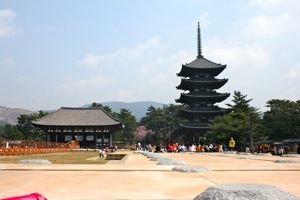

We continued walking east, passing Edo-san ryokan, which seemed like a nice place to stay, as it provided private cottages, on the border of the Nara park (where most attractions are). After a uphill stroll we arrived at the Todai-ji temple complex. First we crossed an enormous 19 meter high gate (Nandaimon), it has two huge guardians that fiercely look down at the passers-by. After a few hundred meters we arrived at the Todai-ji. In the center of the complex stands the Daibutsu-den Hall (Hall of the Great Buddha). This is the largest wooden building in the world, and it is truly huge. The Daibutsu-den Hall contains a 16-meter high bronze statue of Buddha.
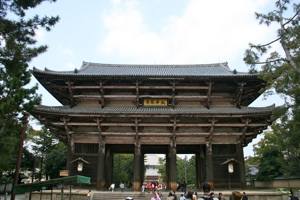
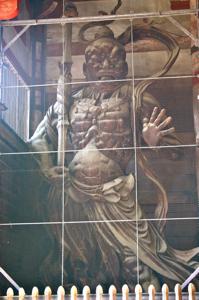
The Great Buddha is surrounded by several other statues. In the back, one of the pillars has a hole in its base. It is believed that the ones that can push themselves through the hole will achieve enlightenment.
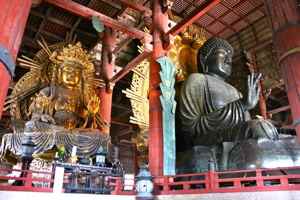
Walking further east and uphill we found two halls: the Nigatsu-do which has a really nice view of Nara, and Sangatu-do which is the oldest building in the Todai complex.


The last building we visited was the Kasuga Taisha shrine. You approach it through a lantern-lined walk-ways. Lantern are also everywhere in and around the complex. It is a really pleasant walk, though somewhat far from the other attractions.
After this very packed day, we headed off to Koyasan, to sleep a night in a real temple, and wake up with the Shingon monks.
